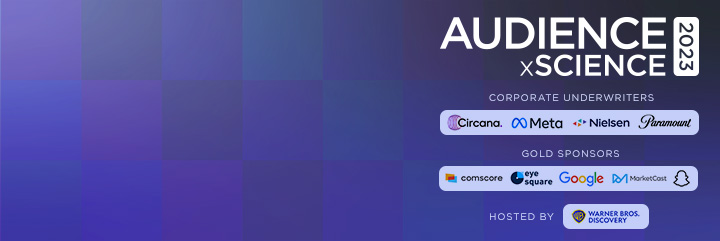- Past Event Highlights
- Article
Beyond Reach, the Importance of Measuring Ad Resonance
Tom Weiss – Chief Data Scientist, MarketCast
Megan Daniels – SVP of Product, MarketCast
Tom Weiss and Megan Daniels of MarketCast introduced a new metric in their break-out session: brand effect resonance. This product evolved from one called Brand Effect which uses a combination of survey (15,000 consumers per day) and behavioral data across linear, social, digital (popular websites) and streaming. First developed by IAG, then owned by Nielsen and then Phoenix, Brand Effect stands as the main engine of the brand-effect resonance rating system, which was created to overcome gaps in reach measurement. They believe it can now isolate and show exactly how content and platform quality impacts advertising performance. Resonance here is defined as how well people remember the ad, how well they understood the creative and the message and how well they can link it back to the brand. Ad resonance measurement is said to be able to isolate the impact of content and platform on ad recall.Key Takeaways
- Reach measurement has drawbacks: even though it acknowledges audience size, it does not measure ad impact. Reach measurement treats all impressions as equal regardless of the content, and while platform and the quality of the content matter, their impact cannot currently be proven.
- Ten percent of respondents to a recent MarketCast survey found that in a digital environment, ads associated with premium content (professionally produced vs. user-generated content (UGC)) had more credible messaging.
- Sixty-two percent who watched a premium clip remembered the ad and the brand correctly versus 49% of those who viewed a UGC clip. In addition, 56% of premium clip viewers thought the ad spoke directly to them, versus 43% who said an ad in a UGC clip spoke to them.
- The resonance score is built from CTV/streaming ACR data, opportunity to see (OTS) surveys for linear TV, tags on digital ads (known exposure) and on social—OTS through memory triggers and surveys.
- Using the always on approach, they survey people about ads they have seen on TV, CTV or social within a 24-hour window. The big pool of participants is used to normalize all other factors, so to see what network or platform would best suit a client’s ad.
- Ad resonance rating is meant to become an interoperable metric that complements traditional reach and frequency measures and other currency metrics.





